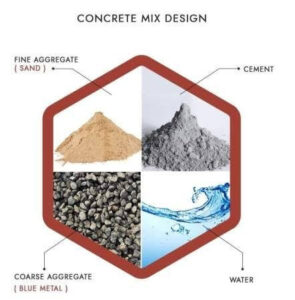Dec
31
Let’s end the year with some cool science, OK?

Would you be surprised if I told you that the following citation comes from the book Improbable Planet (2016) by Hugh Ross? (I didn’t think so.) In Chapter 12 Ross talks about the heating, ventilation, and air-conditioning (HVAC) system for the amazing edifice we call “Earth”. A major part of this is a discussion of the “central dilemma”, i.e., the Faint Sun Paradox, and various models proposed to deal with it.
Ross builds a list of compensating factors which “must have converged in precisely the right ways, right times, and right levels or we would not be here to observe and consider them. What seems even more remarkable, the Sun’s changing luminosity has required ongoing compensation and intricate adjustments throughout life’s history.” He goes on to say:
“In the context of an ever-brightening Sun, repeated mass extinction events followed quickly by mass speciation events provide exactly what is needed, step by step, to lower either the heat-trapping capacity of Earth’s atmosphere or the planet’s albedo (reflectivity) or both. Certain species of life are less efficient at consuming greenhouse gases or reflecting sunlight or both. Due to this efficiency difference, certain species must be removed and replaced with different species that are more efficient at compensating for changes in the Sun’s luminosity…. Organisms compensate for the brightening Sun in five specific ways.”
It is the first of these ways — silicate erosion — that I wanted to focus on here. (I’ll leave out most of the chemistry to keep it relatively simple.)
— — —
Since the origin of life, the coverage of Earth’s surface by continents and islands has grown from 0 percent to 29 percent, and silicates dominate the composition of these landmasses. Silicates are metallic elements bonded to silicon trioxide. As water in the form of streams, rain, mist, and other types of precipitation… makes contact with exposed silicates, it promotes the removal of carbon dioxide from the atmosphere and the addition of carbonates and sand to the landmasses. Gradual removal of carbon dioxide from the atmosphere through this silicate reaction means that as the Sun gradually brightens, Earth’s atmosphere becomes less efficient in its capacity to trap solar heat. In this way, water’s contact with exposed silicates helps compensate for the brightening Sun.
Just as importantly, water’s contact with exposed silicates promotes the production of carbonates and sand, vast quantities of which eventually served as the raw materials for many of the buildings and transportation systems that comprise both ancient and modern civilization. For example, in the manufacture of concrete.

Carbonates and sand also played critical roles in allowing and sustaining an abundance and diversity of advanced plants and animals. For example, carbonates and sand are crucial components in both stromatolites and biological soil crusts, which made possible the survival of vascular(flowering) plants. Thanks to carbonates, crustaceans and vertebrates could proliferate. However, one reason vascular plants, crustaceans, and vertebrates appear so late in life’s history is that it takes a very long time to build up the necessary quantities of cryptogamic soils, carbonates, and sand.
In building up Earth’s landmasses both horizontally and vertically, plate tectonics and volcanism expose greater amounts of silicate to liquid water. Life-forms then erode silicates, and in doing so expose more silicates to liquid water. Throughout life’s history, we see this pattern: life-forms less efficient at eroding silicates were repeatedly replaced by life-forms more efficient in doing so.
Life-forms can differ dramatically in their silicate-eroding capacity. For a vivid example we look to [the aforementioned] vascular plants, the latest plants to appear on Earth. Compared to earlier plant life, vascular plants enhance silicate erosion by as much as two to four times. The roots of certain conifers can penetrate and break apart mountains of solid granite.
Looking back over the entire construction process, we see this evidence: first life helped launch plate tectonic activity; later life sequentially sustained that activity and progressively eroded more silicates to make way for still later life; that life had even greater capacity to provide what future life would need next, and so on. Not only must the timing, geographical locations, and silicate-eroding capacities of these removals and replacements of life-forms prove just right, but this process must also keep perfect pace with the changing physics of the Milky Way Galaxy, Sun, Earth, and moon for 3.8 billion years.
— — —
This all provides an abundance of evidence in favor of an Intelligent Designer. Indeed, the book is filled with a lot more that gives one a truly big-picture view of God’s careful preparation of His physical Creation for the introduction of advanced life in general and human beings in particular.
Soli Deo Gloria!















